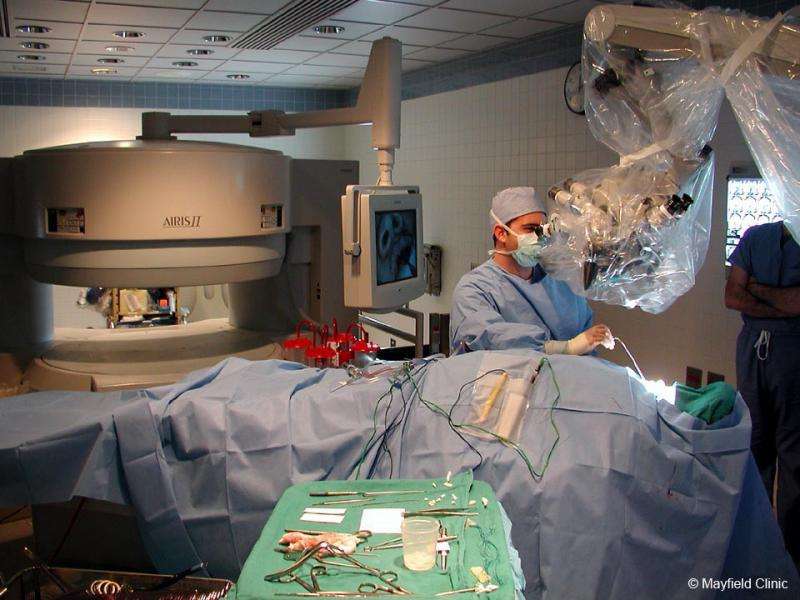Glioma tumor's genetic profile more telling than physical appearance

In the diagnosis of a glioma brain tumor, looks can be deceiving. A glioma that looks relatively unaggressive under a microscope may still have a lethal potential.
That is a key finding of research recently published by the Cancer Genome Atlas Research Network, a national consortium that includes researchers from the Brain Tumor Center at the University of Cincinnati (UC) Neuroscience Institute and the UC Cancer Institute, which integrate scientific research and advanced specialty care at the UC College of Medicine and UC Health.
The researchers discovered that some glioma tumors that appeared to be "lower grade" contained a genetic characteristic that caused them to behave like the most aggressive, high-grade gliomas, also known as glioblastoma multiforme. The study, funded by the National Institutes of Health, was published June 10, 2015, in the New England Journal of Medicine.
"This suggests that molecular diagnosis is and will become more important than the pathologic grades we currently use," says Christopher McPherson, MD, associate professor of neurosurgery at the UC College of Medicine, principal investigator of Cincinnati's portion of the study and a member of the UC Brain Tumor Center. "As a result, we are changing how we treat gliomas today, and our knowledge will usher in more dramatic changes in the future."
The study represents "a landmark," says Ronald Warnick, MD, director of the UC Brain Tumor Center and the John M. Tew, Jr., MD, Chair in Neurosurgical Oncology. "These findings open the door to the development of targeted treatments for variants of the glioma tumor and for subsequent clinical trials."
The Cancer Genome Atlas (TCGA) study examined the genomes of 293 grade II and grade III gliomas from more than two dozen participating academic health centers. The UC Brain Tumor Center provided 26 tissue specimens between 2011 and 2014.
In addition to McPherson, co-investigators from the UC Brain Tumor Center were Warnick; Ady Kendler, MD, PhD, associate professor of pathology and laboratory medicine at UC and director of pathology at UC Health; and Suzanne Sifri, RN, clinical trials coordinator at the UC Cancer Institute. McPherson and Warnick are both neurosurgeons with the Mayfield Clinic.
Lower-grade gliomas include astrocytomas, ependymomas, oligodendrogliomas and oligoastrocytomas. All originate in the glial cells, which are supporting cells in the brain. Unlike solid tumors, gliomas are invasive, diffuse and difficult to completely remove. As a result, they are likely to recur.
The TCGA study looked at the glioma tumors' DNA, RNA, whole genome (complete DNA) and protein to analyze mutations and to correlate those mutations with clinical outcomes, which range widely, from favorable to poor.
The research reaffirmed previous findings that the grades II and III gliomas could be divided into three distinct sub-types, which are characterized by IDH mutation, co-deletion of 1p19q and tp53 status. The research also confirmed that patients with an IDH mutation and 1p19q co-deletion had the most favorable outcomes.
At the same time, researchers discovered that gliomas without an IDH mutation exhibited molecular and clinical behavior that resembled that of a grade IV glioma—or glioblastoma—the aggressive cancer that took the life of former U.S. Sen. Ted Kennedy.
The findings reinforce standard diagnostic and treatment protocols at the UC Brain Tumor Center, says Rekha Chaudhary, MD, a neuro-oncologist and associate professor of medicine. "We automatically determine the genetic profile of glioma tumors that have been removed from our patients," Chaudhary says. "Then we offer patients the opportunity to know what we found."
Chaudhary cautions that a glioma's genetic profile does not always predict outcome. "It is a better predictor of survival, but is not perfect," she says. "We have had patients who had a good genetic profile but whose cancer progressed rapidly. We also have had patients with an unfavorable genetic profile who did well. For this reason, patients should never abandon hope."















